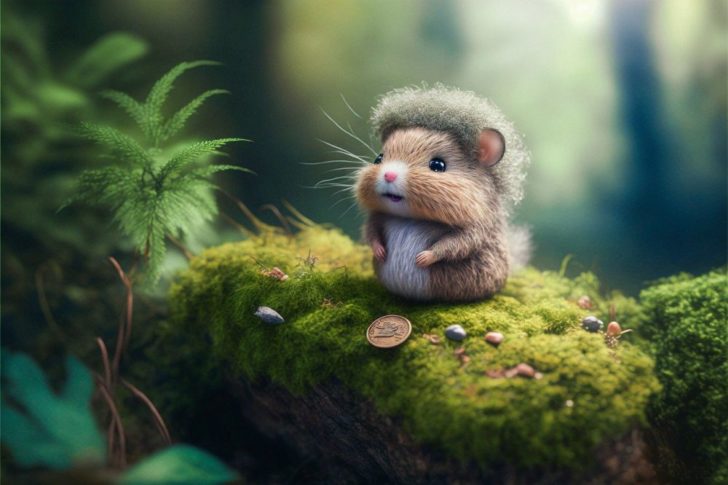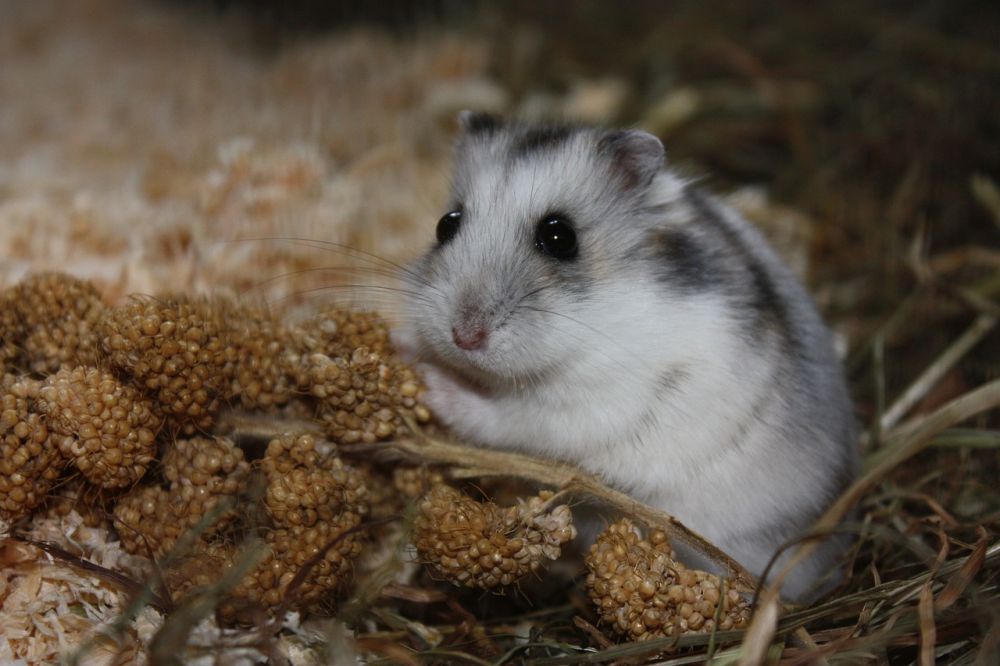An Overview of the Angora Hamster

The Angora hamster, known for its long and fluffy fur, is a popular choice among hamster enthusiasts. In this article, we will provide a comprehensive overview of the Angora hamster, including its types, popularity, and unique characteristics.
Types and Popularity
The Angora hamster is a breed of hamster that is known for its long, soft, and silky fur. There are two main types of Angora hamsters: the Syrian Angora and the Dwarf Angora. The Syrian Angora is the larger of the two, with an average size of 6-7 inches, while the Dwarf Angora is smaller, reaching only about 4-5 inches in length.
The popularity of Angora hamsters has been steadily increasing in recent years. Their adorable looks, gentle nature, and luxurious fur make them highly sought after as pets. Many hamster enthusiasts prefer the Angora breed for its unique appearance and charming personality.
Quantitative Measurements

When it comes to quantitative measurements, the Angora hamster stands out due to its fur length. The fur of an Angora hamster can grow up to 2-3 inches long, making it one of the fluffiest hamster breeds. This characteristic is what sets it apart from other breeds, as it gives the Angora hamster a distinct, eye-catching look.
Differences among Angora Hamsters
While all Angora hamsters share the common characteristic of long and soft fur, there are certain differences among the various types within the breed. For instance, Syrian Angora hamsters are typically larger and have a more robust build compared to their Dwarf Angora counterparts. Dwarf Angora hamsters, on the other hand, are generally more sociable and can be easily tamed.
Another difference lies in the color variations within the Angora breed. Angora hamsters come in a range of colors, including white, cream, black, gray, and various shades of brown. These variations add to the appeal of owning an Angora hamster, as owners can choose based on their personal preference.
Historical Review of Pros and Cons
Throughout history, Angora hamsters have faced both advantages and disadvantages. On the positive side, the long and silky fur of Angora hamsters has made them popular show animals. Their gorgeous coat has been highly regarded in breeding competitions, showcasing the dedication and skill of hamster enthusiasts.
However, the luxurious fur also comes with some drawbacks. The length and density of the fur require diligent grooming and maintenance to prevent tangling and matting. Regular brushing and occasional trimming may be necessary to keep the fur in optimal condition. Additionally, the fur can sometimes shed excessively, which may be an issue for individuals with allergies.
Overall, owning an Angora hamster can be a rewarding experience for those who are willing to put in the effort to care for their unique fur. The charming personality and striking appearance of these hamsters make them a delightful addition to any family.
[INSERT VIDEO HERE]
In conclusion, the Angora hamster is a fascinating breed known for its long and fluffy fur. With different types, colors, and characteristics, Angora hamsters offer a diverse range of options for hamster enthusiasts. While the fur requires extra care, the unique appeal of owning an Angora hamster makes it worth the effort. Whether as a show animal or a beloved pet, the Angora hamster never fails to capture the hearts of its owners.
FAQ
Vilka är de huvudsakliga nackdelarna med att äga en angora hamster?
Vilka är de populäraste raserna av angora hamstrar?
Vilken är den genomsnittliga livslängden för en angora hamster?
Fler nyheter
Allt du behöver veta om hundtrim i Sölvesborg
The Angora hamster, known for its long and fluffy fur, is a popular choice among hamster enthusiasts. In this article, we will provide a comprehensive overview of the Angora hamster, including its types, popularity, and unique characteristics. Types ...
06 april 2025
Den underbara blandrasen Havapoo: En perfekt familjehund
The Angora hamster, known for its long and fluffy fur, is a popular choice among hamster enthusiasts. In this article, we will provide a comprehensive overview of the Angora hamster, including its types, popularity, and unique characteristics. Types ...
04 mars 2025
Ett paradis för hundar: Hunddagis i Jämtland
The Angora hamster, known for its long and fluffy fur, is a popular choice among hamster enthusiasts. In this article, we will provide a comprehensive overview of the Angora hamster, including its types, popularity, and unique characteristics. Types ...
04 januari 2025
En trygg plats för din hund på hunddagis i Nacka
The Angora hamster, known for its long and fluffy fur, is a popular choice among hamster enthusiasts. In this article, we will provide a comprehensive overview of the Angora hamster, including its types, popularity, and unique characteristics. Types ...
02 januari 2025











